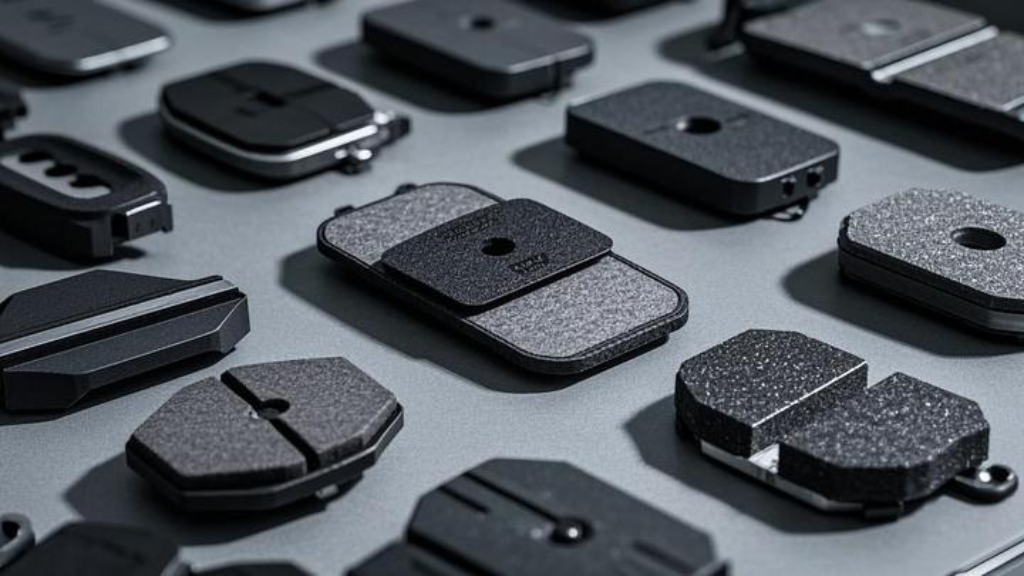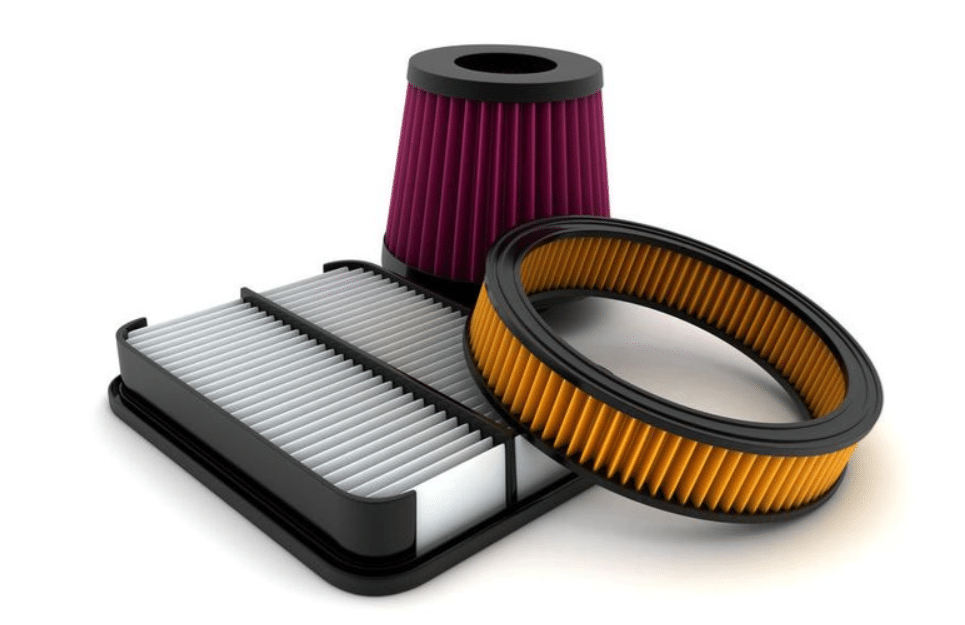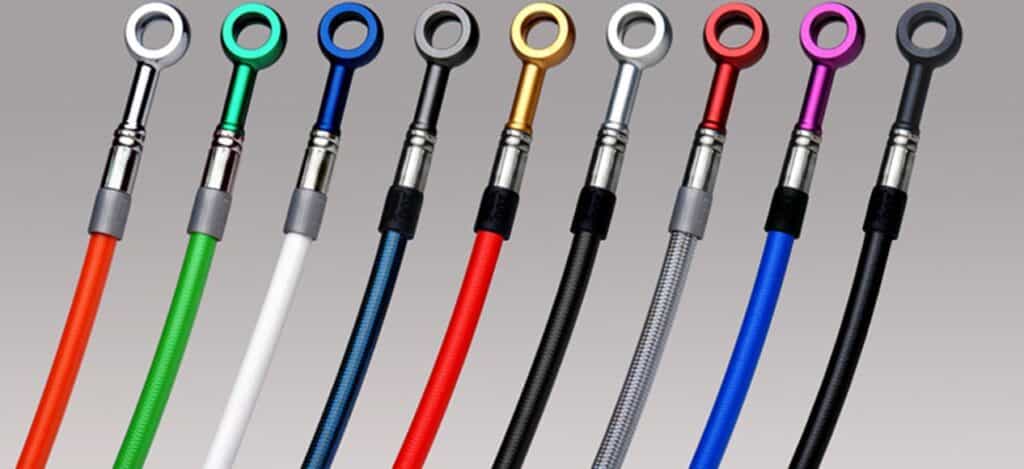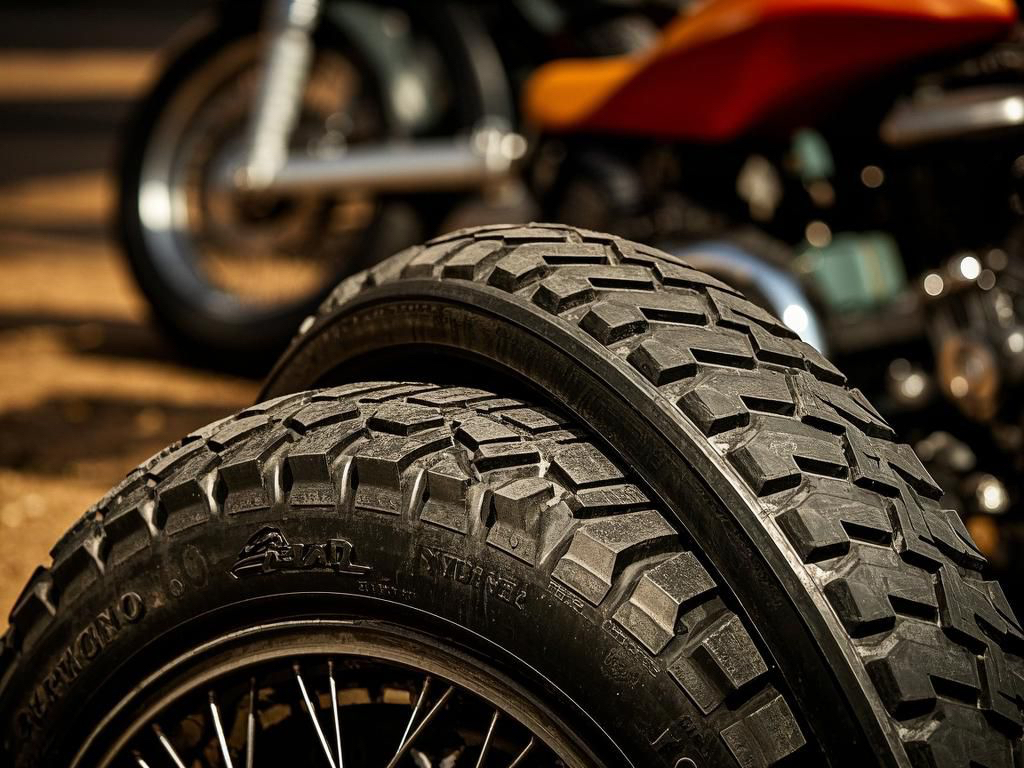Brakes are one of the most critical components of a motorcycle, and at the heart of your braking system lie the brake pads. These small but mighty components play a huge role in keeping you safe on the road. In this article, we’ll dive into everything you need to know about motorcycle brake pads, including types, signs of wear, and how to choose the right ones for your ride.
Types of Motorcycle Brake Pads
Not all brake pads are created equal. They come in different materials, each offering unique performance characteristics. The most common types are:
A. Organic Brake Pads
Contain between 10 to 30% metal, but the rest of the friction material comes from plant-derived fibers, high-temperature resins, and other materials. Depending on the proportion of metal in them, they might also have Kevlar, carbon, rubber, and even glass in them. Most organic pads generate good friction without having the need to be warmed up in any way, and they are also the most affordable on the market. However, organic brake pads do not cope well with performance driving and tend to wear faster than other types.
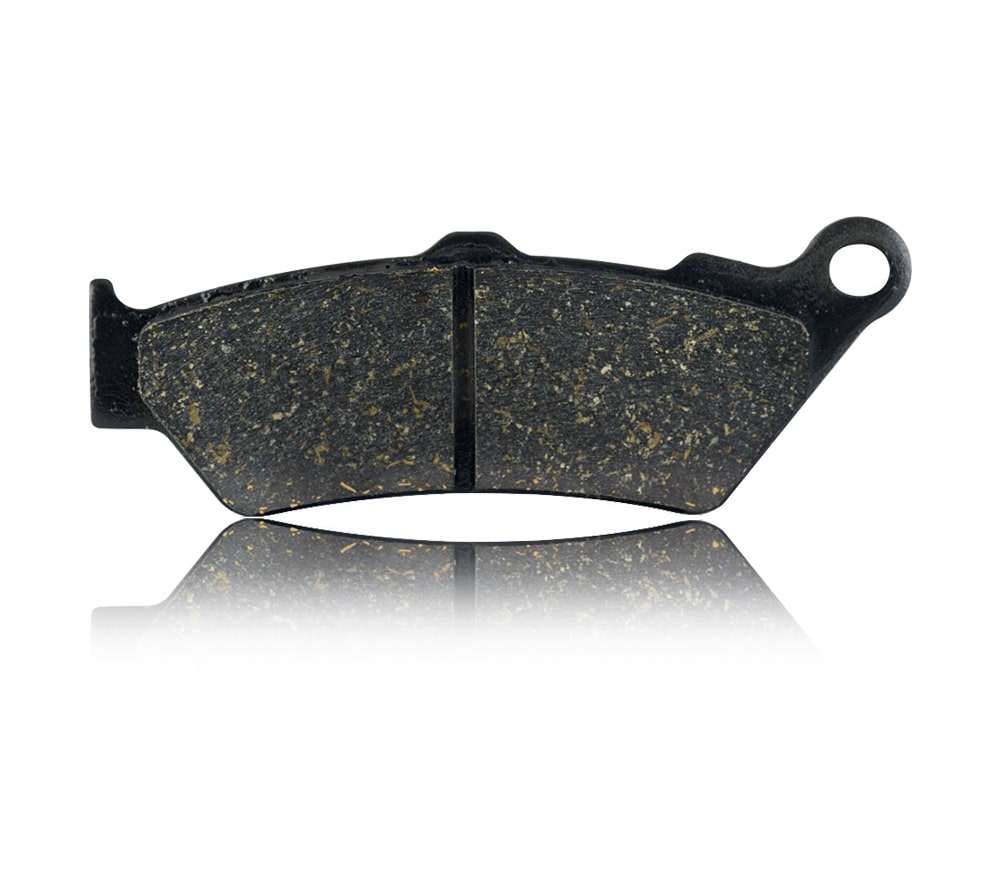
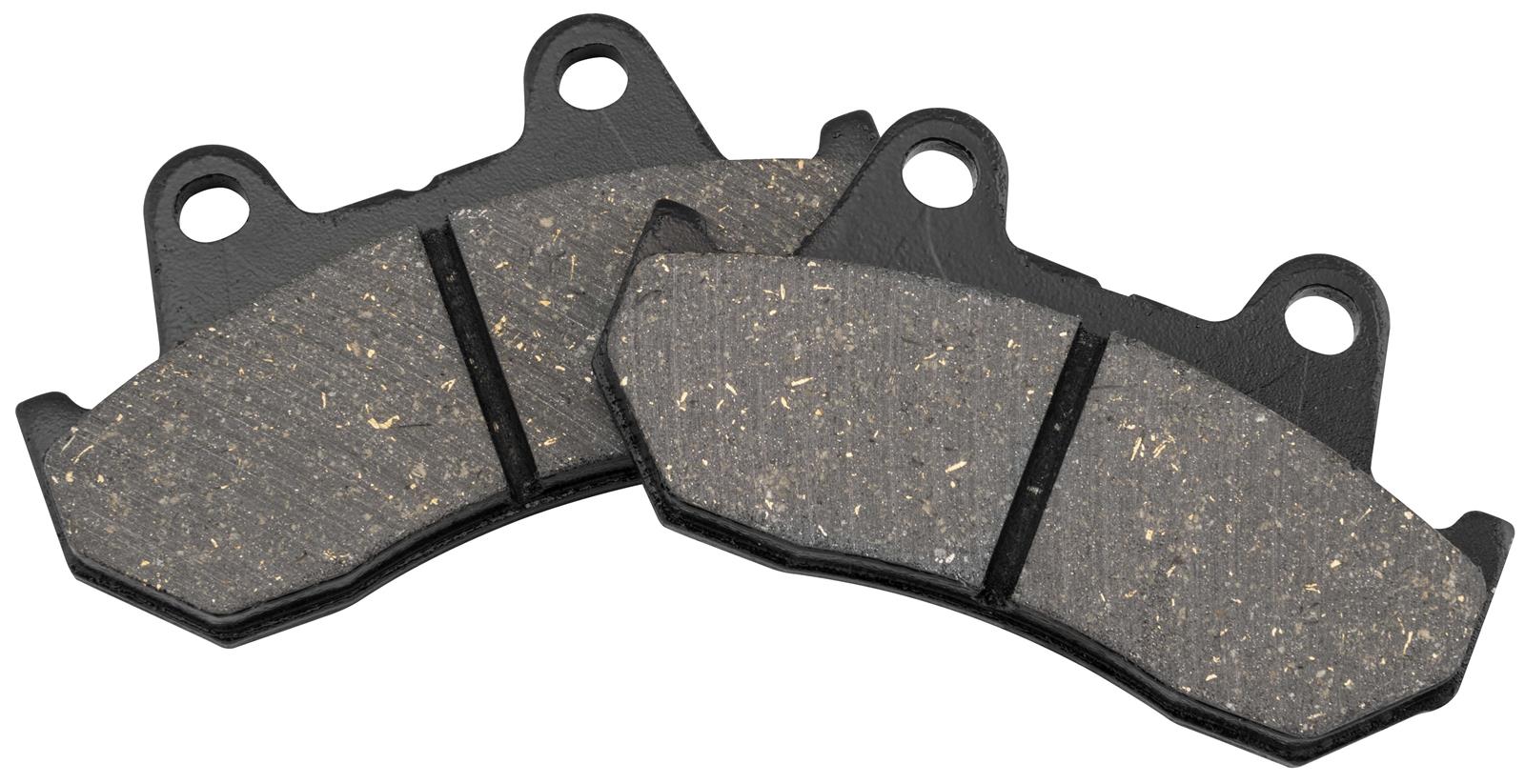
B. Semi-Metallic Brake Pads
Considered to be the most versatile type of brake pad on the market. they feature from 30 to 65% metal by weight. Multiple types of metal are used, from copper and iron to steel. The rest of the friction surface is made of fillers, modifiers, and other substances required to enhance performance and maintain reliability. These pads are suitable for a range of riding conditions, offers a balance of durability and stopping power. Also, suitable for a range of riding conditions. The semi-metallic brake pads also generate more wear on the brake rotors/discs, but also provides more “bite” and feeling when pressing the pedal.
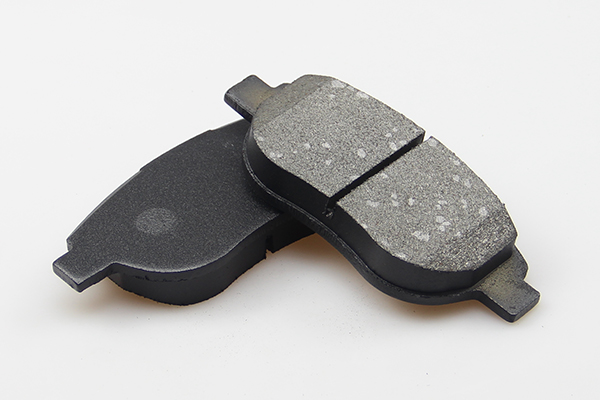
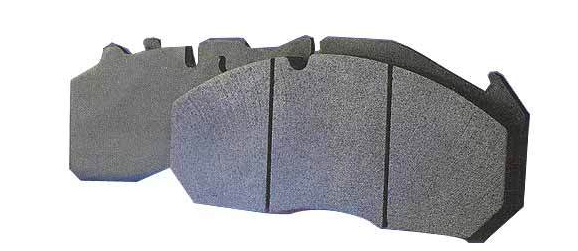
C. Sintered Brake Pads
Provides the best stopping power and heat resistance. Sintered brake pads are composed of metallic particles fused under high pressure. Provide excellent braking power and heat resistance. Work well in all weather conditions. Commonly used in sport-bikes and high-performance motorcycles.
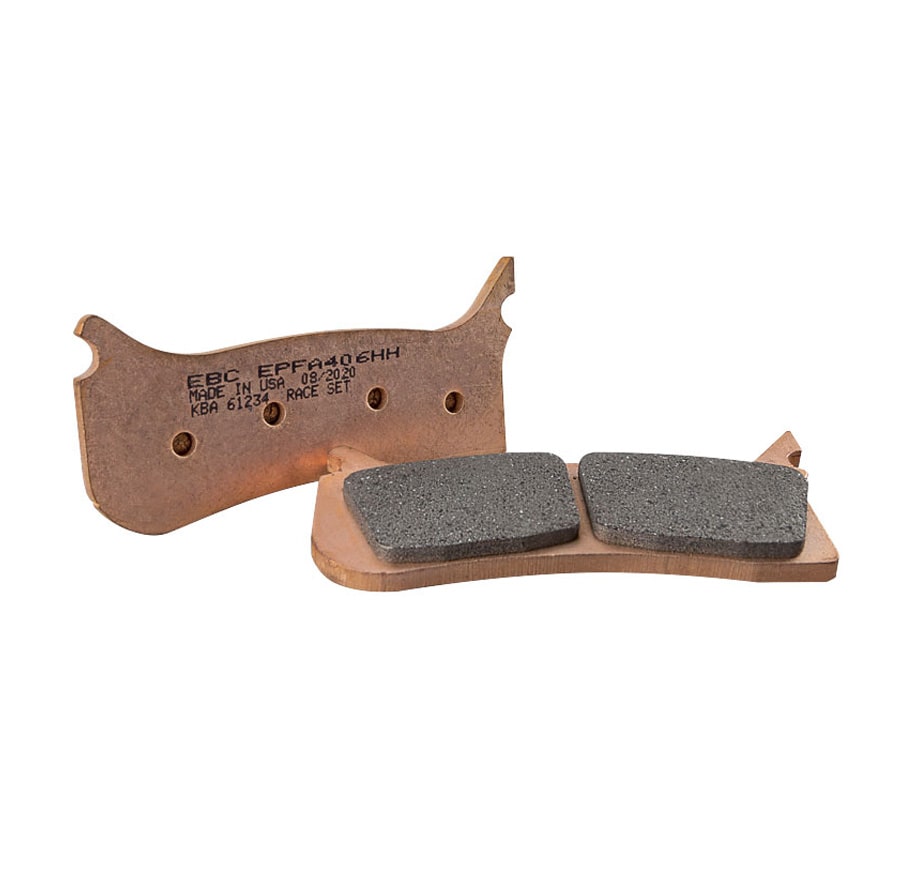
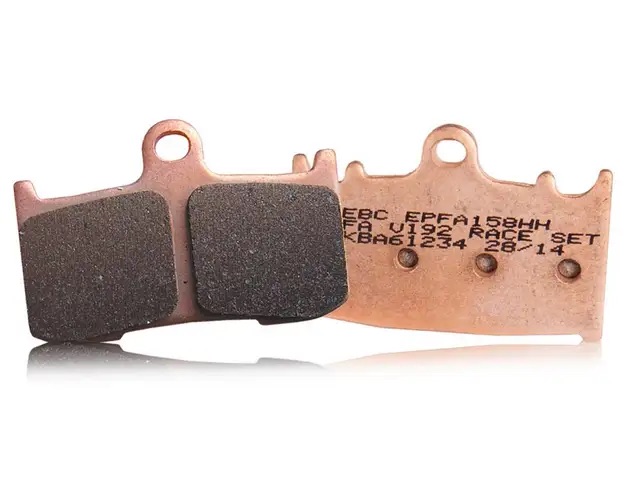
D. Ceramic Brake Pads
Made from ceramic fibers, nonferrous filler materials, and bonding agents. They provide the highest level of performance, but also come at a hefty cost, and need to be warmed up for optimal performance. The major advantage of ceramic brake pads comes in the form of the longer lifespan and temperature stability over a broad range of uses. Although ceramic brake pads are the most expensive but provide smooth braking with minimal noise and less wear on brake rotors.
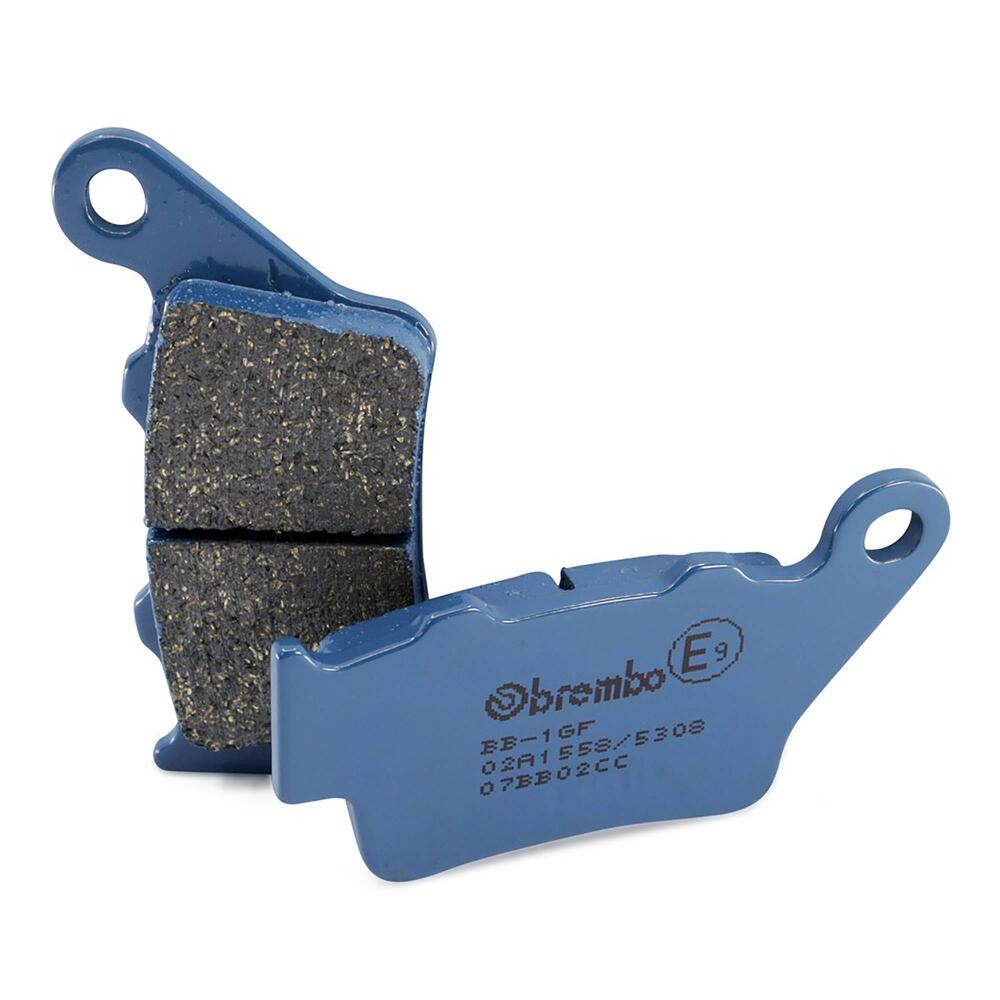
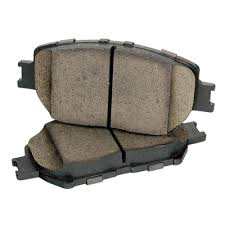
Signs That Your Brake Pads Need Replacing
Brake pads don’t last forever, and riding with worn-out pads can be dangerous. Here are some signs that it’s time to change them:
- Squeaking or squealing noises– A high-pitched sound when braking usually means the pads are worn.
- Reduced braking performance – If your bike takes longer to stop, check the brake pads.
- Vibration or pulsation – Feeling a pulse through the brake lever or pedal can indicate uneven wear.
- Visible wear – If the pad material is less than 3mm thick, it’s time for a replacement.
- Grinding noises – This means the pads are completely worn down, and the metal backing is rubbing against the rotor—a serious issue that can damage the braking system.
Choose the Right Brake Pads
Choosing the right brake pads depends on your motorcycle type, riding style, and typical road conditions. Here are some tips:
- For daily commuting – Organic brake pads
- For sport or performance riding – Sintered pads provide the best stopping power and heat resistance. Semi-metallic brake pads are also a fantastic choice.
- For touring bikes – Ceramic pads last longer and produce less dust, making them ideal for long rides.
- For off-road riding – Sintered or semi-metallic pads handle dirt, mud, and varying terrain better.
Understanding the different types, knowing when to replace them, and maintaining them properly will ensure a safe and smooth riding experience. Whether you’re a daily commuter, a weekend warrior or an aggressive rider, choosing the right brake pads can make all the difference in your ride’s performance and safety.
Ride safe and always keep your braking system in top condition!

